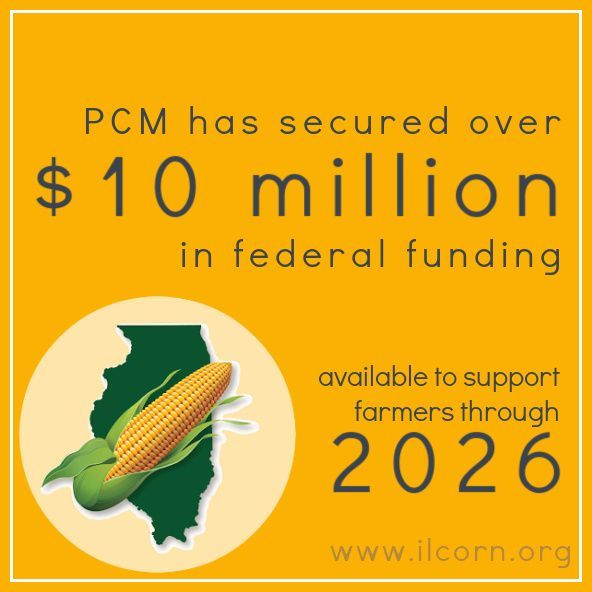Precision Conservation Management Program Receives USDA RCPP Renewal

Precision Conservation Management, the premiere conservation program of the Illinois Corn Growers Association, received a renewal from the United States Department of Agriculture’s – Natural Resources Conservation Service (USDA-NRCS), Regional Conservation Partnership Program (RCPP) – one of only a few in the nation to do so.
Under the RCPP, PCM has now secured over $10 million dollars in federal funding to support local Illinois farmers as they work to implement conservation practices on their farms. The RCPP funding renewal awarded to PCM will be available to support farmers through 2026.
“Farmers are interested in investing in their farms and in the environment but trying something new that requires its own investment and may or may not work out financially is a risky situation, especially in today’s difficult ag economy. This RCPP renewal gives PCM farmers access to funds that will offset that risk and get them started trying out a new conservation management technique,” said PCM Director Travis Deppe.
In 2019, the program funded approximately 100,000 acres of conservation practices in Illinois, superseding their goal by 20,000 acres.
According to State Conservationist Ivan Dozier, “I’m glad we have programs like RCPP that give us greater flexibility to work with partners by leveraging resources and focusing on issues. Our goal is to help farmers do the right thing that fits their farm, their soils, and their land. I am pleased with the interest and activity in PCM and the impact this program will have here in Illinois and beyond.”
“Having access to these dollars makes all the difference when I’m talking to farmers and trying to help them understand what implementing a new conservation program might entail,” said Clay Bess, PCM Conservation Specialist. “Farmers that worked with us over the last five years reported that offsetting their risk was a key decision point when they considered joining our program.”
“What makes PCM different from other programs is that they are considering the financial impact to the farmer for each practice. Yes, I want my farm to be in the best environmental shape it can be and I want it to have great soils and minimal erosion, but I have to know that practices pan out financially for me to try something new. It’s a tough economic climate in ag today and sustainability also means that I’m financially stable enough to pass something on to my kids,” said Tim Mohr, PCM farmer from Allerton, IL.






